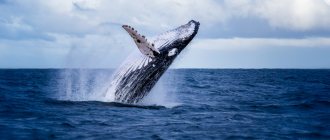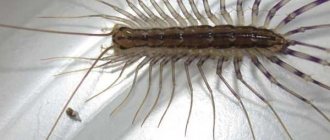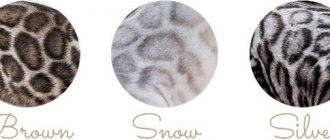- Wild animals
- >>
- Mammals
The blue whale (vomit) is the most massive inhabitant of our planet. It weighs up to 170 tons, and its length can be up to 30 meters. Only a few representatives of this species grow to such sizes, but the rest can also justifiably be called giants. Due to active extermination, the population of vomits has greatly decreased, and now they are in danger of extinction.
Woodpecker
Everyone knows that the woodpecker has a very strong beak, with which it makes holes in the bark of trees to get food for itself. But few people know that this bird has the largest tongue. There are specimens with a tongue longer than 10 cm. In order to accommodate it, nature has endowed woodpeckers with a special section of the skull. And at the end of the woodpecker’s tongue there is a small hook, with which it captures small insects hiding under the bark.
Features of character and lifestyle
Photo: Blue whale in the ocean
They often swim alone, and sometimes in twos or threes. In areas rich in plankton, several such groups can gather. But even if the whales are huddled in a group, they still behave detachedly, and after a while they disperse.
You won’t find them close to the shore - they love vast space and depth. They spend most of their time calmly swimming from one accumulation of plankton to another - this can be compared to how land herbivores graze.
On average, a blue whale swims at a speed of about 10 km/h, but can swim even faster - if it is frightened by something, it reaches 25-30 km/h, but only for a short time, since during such a race it spends a lot of energy .
The process of immersion for nutrition is interesting - it requires preparation. First, the whale empties its lungs, then takes a deep breath, dives shallowly about ten times and comes to the surface again, and only then performs a deep and long dive.
Usually the vomit goes into the depths of the water a hundred or two meters, but if it is frightened, it can dive much deeper - up to half a kilometer. This happens when killer whales hunt him. After 8-20 minutes, the whale surfaces and begins to breathe rapidly, releasing fountains into the air.
After “catching his breath” for a few minutes, he can dive again. If a whale is being pursued, it can remain in the water column much longer, up to 40-50 minutes, but gradually loses strength.
Chameleon
Chameleons are rightly called the most unusual lizards. The length of their tongue is usually equal to the length of the body. And the longer the chameleon itself, the larger its tongue, the average length of which is 50 cm. They need the tongue for hunting. It is impossible to observe this without special equipment, since it acts with lightning speed. A chameleon needs only 3 seconds to recognize and catch up to 4 insects.
Appearance and features
Photo: Animal blue whale
The skin is gray with spots. The shade of the back and sides is slightly lighter, and the head, on the contrary, is darker. The belly is distinctly yellowish, which is why the vomit was previously called the yellow-bellied whale. The animal's modern name was given because its back may appear blue when viewed through seawater.
The skin is mostly smooth, but there are stripes along the stomach and throat. Many different parasites live on the animal’s skin and baleen. The eyes are small in relation to the body - only 10 centimeters in diameter, located at the edges of the head, which is shaped like a horseshoe.
The jaw is arched and protrudes forward by about 20 centimeters when the mouth is closed. Whales are warm-blooded, and an impressive layer of fat is designed to help maintain temperature.
There are no gills, vomits breathe with the help of powerful lungs: almost complete air exchange can be carried out at a time - 90% (for comparison: a person needs to take six inhalations and exhalations to achieve this figure).
Due to the volume of their lungs, whales can remain in the depths for up to 40 minutes before needing more air. When a whale rises to the surface and exhales, a fountain of warm air appears, and the sound produced by this can be heard from afar - 3-4 kilometers away.
In total, there are several hundred whalebone plates measuring 100 by 30 centimeters in the animal’s mouth. With the help of plates, the whale vomits water, and the fringe with which they end filters plankton from it, which the whale feeds on.
Komodo dragon
Adult monitor lizards grow up to 3 m in length and weigh about 70 km. Moreover, the lizard has a 70-centimeter tongue, with which they can easily kill a large bull. But for this they do not need to attack their victim and fight with her in a duel. It is enough for a monitor lizard to sting its victim with its tongue, and then everything will be done by its saliva. It turns out that the Komodo dragon’s saliva contains a huge amount of decay products, which, when they enter the victim’s blood, infect it. And the monitor lizard can only wait for the moment when the toxic substances begin to act.
How much does a white whale weigh?
There is a theory that whales once lived on land, and moved to the water after some unfavorable living conditions arose. Certain facts support this assumption:
- whales have a special skeletal structure, different in shape from the skeleton of fish;
- Mammals do not breathe through gills, like all fish;
- Baby whales are born fully formed and feed on their mother's milk.
The name of whales depends on the color of their skin. The white whale or beluga whale is much smaller than its large counterparts, blue whales, weighing about two tons, they grow up to six meters. We can say that the weight of an adult beluga whale is equal to the weight of a newborn blue whale.
The skin color of a white whale from birth is almost blue, by one year it darkens and becomes gray, and only by the age of five the beluga whale acquires a marble-white hue.
The appearance of the white whale also has its own characteristics: the head of the mammal is quite convex, and the front fins are short.
The white whale feeds on schooling fish, crustaceans and mollusks. Lives for about forty years. The danger for him is represented by killer whales, hunter whales and polar bears; when a beluga whale is trapped among the ice, it has to surface every two minutes to get some air, it becomes their easy prey.
Blue whale
This mammal is not only the largest and heaviest animal on the planet. Its features include the longest tongue. This organ in a blue whale can reach 3 meters. The whale uses this organ to filter tons of water that enters its mouth from shrimp and other food.
It turns out that for every living creature, the tongue plays its own special role, helping them not only in the process of eating.
Top 10: Amazing and interesting facts about blue whales
Whales are giants of the marine ecosystem, adored by people for centuries, but we know so little about them! These wonderful sea creatures have dominated the oceans for millions of years and are one of the most wonderful sights that everyone should see! They give birth to babies just like humans because they are marine mammals. The list of giants is always topped by the blue whale, the largest animal on our planet, and here are 10 amazing facts about it.
10. They're not that blue
photo: theverybesttop10.com
As their name suggests, blue whales are actually only blue in their eyes, although when these giants surface they appear silvery blue with a yellow belly. They appear blue when viewed in water, but this is due to the color of the sea.
Yellow bellies are the reason they are called “yellow bellied whales.” The color comes from the type of algae that lives on the whale's belly, giving it a yellow tint. However, this algae does not harm them as their relationship is symbiotic.
9. Their food is very small
photo: janeb13/Pixabay
Blue whales require up to 40 tons of food per day, which would be apocalyptic if they had to kill fish and other sea creatures to survive. Luckily, they don't have to do this.
Krill are small marine crustaceans that live in most parts of the world's oceans. They are food for millions of sea creatures, but blue whales consume the largest quantities of them. Incredibly, the largest animal on the planet eats some of the smallest sea creatures. It is estimated that the total weight of krill in the world's oceans exceeds the total weight of all humanity on the planet. That's how many of these little crustaceans are in the ocean!
Eating large amounts of krill from time to time causes stomach upset in whales, leading to vomiting, which blue whales excrete as a mass that later hardens in seawater. This mass (ambergris) is highly valued because it is used for the production of perfumes.
8. Blue whales are the largest animals ever to live on Earth.
photo: theverybesttop10.com
The savannah elephant is the largest living land animal, but it would take 10 of them to measure one blue whale! Even dinosaurs and megalodons could not grow to such sizes.
Blue whales grow up to 27-33 meters in length and can weigh up to 200 tons. Females are usually larger than males. Blue whales have a lifespan of 80-110 years, making them one of the longest-living creatures on Earth.
7. Their closest living animal relatives are hippos
photo: dennisflarsen/Pixabay
Strange as it may sound, hippos are the closest relatives of blue whales among living animals. They spend most of their time in the water, coming onto land only for a few hours, especially at night, to feed on vegetation. These two species of animals have the greatest genetic similarity than any other mammals, both on land and in water.
The possible genetic ancestor of these two creatures is considered to be the land mammal Indochyus, which 47-52 million years ago was physiologically similar to a hippopotamus. It's unclear why hippos still feed on land while whales feed in the water, but either way, they're both good at it.
6. The tongue of a blue whale is larger than an adult elephant.
photo: coloringcuties/Pixabay
Large animals need large body parts to survive, hence the incredible body part statistics of the blue whale. Their heart weighs anywhere from 600 to 900 kilograms, which is heavier than a car.
The most interesting part of the blue whale's body is its tongue. On average, it weighs 2.7 tons, which is heavier than an adult elephant. The tongue is also elastic and helps whales swallow huge volumes of water while swimming.
5. Blue whales are too big to survive on land.
photo: theverybesttop10.com
Unlike hippos, which have the legs and teeth they need to survive on land, blue whales are designed to only swim and feed in the water. Legs aren't the only thing they lack to survive on land. Blue whales have heavy bones, which could be adversely affected by gravity if they were on land.
Additionally, their arteries are 23cm wide, meaning their blood pressure would be too low if they lived on land. They would also need vast spaces to move and feed efficiently, and the vegetation, hills and all the obstacles on land simply would not allow them to do so.
4. If they fall asleep, they will drown
photo: giseg/Pixabay
Whales live their entire lives in water, but they cannot breathe underwater. They have nostrils (blowholes) that hold a large volume of water, allowing whales to remain underwater for more than 30 minutes. Most divers can't last longer than 20.
It is vital for whales to come to the surface to breathe, so they cannot afford to go completely to sleep. The blue whale's brain is divided into two parts, and only one hemisphere can sleep. If both hemispheres of the brain fall asleep, the animal will forget to surface and breathe, which will lead to death.
3. A baby can fit through their nostrils.
photo: Diego_perez/Pixabay
The most remarkable thing about blue whales is the release of water when they come to the surface. Water rises from the blowhole in the form of a fountain to a height of 9-10 meters. Their nostrils are about 50 cm wide, so whale watchers agree that a child could easily fit through their nostrils.
The breathing holes, which are their nostrils, remain closed underwater thanks to a valve that prevents water from entering, so the air in them is usually pressurized and blown so high when whales surface.
2. Blue whales are some of the loudest animals on the planet.
photo: Aurusdorus/Pixabay
The songs of whales are their most interesting feature. The singing of whales is not so well audible to us on the surface, but if we could scream underwater, we would not be comparable in volume to blue whales.
The songs of blue whales can be heard over 1,600 km away, which is louder than a jet engine. These sounds are vital for them to communicate - especially during mating season.
1. Humans have destroyed more than 90% of the blue whale population
photo: Three-shots/Pixabay
A recent study confirmed that at least 60% of blue whales become entangled in fishing nets at some point in their lives, a rate much higher than previously thought. This means that human activity remains the biggest threat to the existence of these majestic creatures, which have been on the brink of extinction for almost 200 years.
Due to intensive whaling in the 19th century, more than 90% of the blue whale population died in the world's oceans. The Atlantic population has recovered slightly, but fishing and the transport industry still threaten their existence.
Habitat
In general, the blue whale is cosmopolitan. Its historical range covered almost the entire world's oceans, although herds of puking gravitated towards certain individual regions. The northern and southern subspecies are more often found in cold waters, while dwarf whales live in warmer waters. The southern subspecies spends most of its time in cold subantarctic waters. Its winter migrations have not been sufficiently studied to this day, but in any case, this whale rises quite far to the north - southern blue whales have been observed off the coast of South Africa, Namibia and Chile.
In the Indian Ocean, blue whales are found in equatorial waters throughout the year. They can be seen especially often near Ceylon and the Maldives, somewhat less often near the Seychelles and in the Gulf of Aden. They are so common off Ceylon that some observers consider the coast of Sri Lanka to be the most suitable place for observing vomits.
In the eastern Pacific, blue whales begin to be found off the Chilean coast around 44° south latitude. They are apparently absent from the Pacific Ocean off the American coast from Costa Rica to California, but become abundant in Californian waters. North of 40° N. w. they are more common in the strip from the Oregon coast to the Kuril Islands and further north to the Aleutian ridge; but they don’t go far into the Bering Sea. In the past, vomit whales were found in waters near Japan and the Korean Peninsula, where they are now absent. Blue whales are extremely rare in Russian waters. Small groups or single animals were observed near Cape Lopatka.
The number of blue whales in the North Atlantic Ocean is small compared to the herds in the Southern Hemisphere. In the North Atlantic, puking is most common off the Canadian coast in the areas between Nova Scotia and Davis Strait. Blue whales are found in the Denmark Strait, as well as off Iceland and Spitsbergen. In the past, blue whales were caught off the coast of mainland Norway, the Faroe Islands and the north-west coast of the British Isles. Occasionally, vomiters can be found off the coast of Spain and Gibraltar. Although, according to the International Red List, blue whales do not enter the Mediterranean Sea, when listing the habitats of the blue whale, IUCN specialists mention the waters of Greece.
It is known that blue whales, which spend the summer in high latitudes of both hemispheres, migrate to warmer areas of low latitudes in winter. The winter migrations of the blue whale in the North Atlantic are almost unknown. For a long time, it remained unclear to experts why blue whales, with the onset of the cold season, always leave Antarctica to the north, to warm waters, despite the fact that a good food supply remains in the same place. Apparently, this is caused by the fact that when females give birth to cubs, they try to take them away from cold areas, since the poorly developed fat layer does not protect the cubs well from the cold.
Nutrition
The diet of the blue whale is not fundamentally different from the diet of other minke whales. The blue whale is a typical plankton eater; its diet is dominated by small (no more than 6 cm in length) crustaceans from the order euphausiaceae, forming mass aggregations - the so-called krill.
Fish, if it plays any role in the diet of the blue whale, is very insignificant. Soviet sources indicated that the blue whale does not eat fish at all; other sources more definitely indicate that they still eat fish. Most likely, the ingestion of fish and other small marine animals occurs accidentally, when eating masses of krill. It is also possible that the predation of small schooling fish and small squid observed in the western Pacific Ocean is caused by the absence of large aggregations of planktonic crustaceans. In addition to a small amount of small fish, small crustaceans other than krill were found in the blue whale's stomach.
The blue whale feeds in the same way as other minke whales. A grazing whale swims slowly, opening its mouth and taking in water with a mass of small crustaceans. The stripes on the throat allow the whale's mouth to stretch very strongly, and the movable articulation of the lower jaw bones also greatly contributes to this. Having scooped up water with crustaceans, the whale closes its mouth and squeezes the water back through the whalebone with its tongue. In this case, plankton settles on the fringe of the baleen and is then swallowed.
Social structure and reproduction
Photo: Blue whale calf
To communicate with other whales, powerful infrasound signals with a frequency of about 10-20 Hz are used. With their help, vomits can make themselves known to relatives swimming at a considerable distance.
These animals are monogamous, and established pairs swim together for many years. Once every two years, a baby whale appears in such pairs; before this, the female carries it for almost a year. A newborn is fed very high-fat milk for a little more than six months, and on a milk diet gains hundreds of kilograms every day.
As a result, it very quickly grows to impressive sizes, reaching 20 tons or even more weight. They are fertile from the age of 4-5, but even after this period the growth process continues - it continues until they are 15 years old.
Researchers' opinions on the life expectancy of vomiting whales vary. The minimum estimate is 40 years, but according to other sources they live twice as long, and long-livers even exceed a hundred years. Which estimate is closer to the truth has not yet been established for certain.
Vomits are the loudest living creatures. They are even louder than an airplane jet engine! Relatives can hear their songs at a distance of hundreds and even thousands of kilometers.
Description
The blue whale (Balaenoptera musculus) is a marine mammal from the order Cetacea, belonging to the baleen whale (genus of minke whales). The largest whale, the largest living animal, and also probably the largest animal that has ever existed on Earth. Its length reaches 33 meters, and its weight can significantly exceed 150 tons.
The blue whale has an elongated, slender body - its length to body thickness ratio is much greater than that of other baleen whales. The head is large, making up about 27% of the body length. The snout is sharp, the head has a U-shaped outline when viewed from above, and is strongly flattened in profile. The lower jaw is wide and curved to the sides, covers on all sides the upper, which is much narrower than the lower, and protrudes forward beyond the end of the snout by 15-30 cm. The lower jaw of the minke whale is the widest relative to the width of the head among other minke whales. When viewed from the side, the line of the mouth runs close to and almost parallel to the top line of the head; The corner of the mouth bends down. On the muzzle there is a small number (about 20) of hairs used for touch. Small eyes are located almost above the mouth, close to its corner.
The blowhole, like that of all baleen whales, is formed by both nostrils and looks like two narrow holes converging at the front end. In the blue whale it is located at the back of the head. When exhaling, the blue whale releases a vertical fountain of water in the form of a narrow, upward-expanding cone or column up to 9 or even 10 m high. On the head in front of the blowhole there is a noticeable sharp keel-shaped longitudinal ridge, which is called a “breakwater” by English-speaking whalers.
The dorsal fin of the blue whale is very small, triangular, and pointed. Compared to the fins of other whales, it is shifted far back and is located at the beginning of the last third of the body. Its shape varies, in some specimens the fin is barely noticeable, in others it is more developed and has a strong crescent-shaped notch at the back. The blue whale's dorsal fin, relative to body length, is the smallest of all baleen whales, being only about 1% of its body length (maximum 35 cm). When a blue whale dives, the part of its back with its fin is usually the last to go under water. The pectoral fins of the blue whale are elongated and narrow. They are about 1/7 the length of the body; the caudal fin reaches 7.6 m in width; it has a relatively small cutout. The caudal peduncle is unusually thick.
Like all minke whales, the blue whale has a large number of longitudinal stripes or grooves on the underside of its head, which continue onto its throat and belly. They are formed by folds of the skin and play a dual role - they help the whale’s pharynx to stretch greatly when swallowing a large volume of water with food (more than one and a half times the volume), and also improve the hydrodynamic properties of the whale’s body. The blue whale usually has 55-68 and even 80-90 such stripes.











